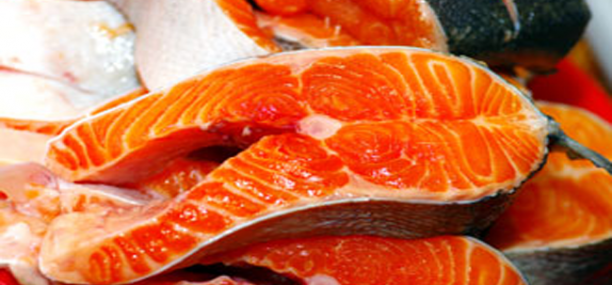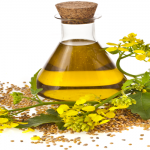Nutrition facts and Nutritional information of Astaxanthin
Astaxanthin (астаксантин, أستازانتين) is a product of Haematococcus Pluvialis (a microalgae commonly found on rocky shores). In the microalgae, astaxanthin is produced from UV exposure in a similar way as our skin cells produce melanin in response to sunlight exposure
The role of Astaxanthin in Aquatic Plants
The role of astaxanthin in salmon or shrimp pigmentation
Astaxanthin is a component similar by functionality to melanin, it is the nutrient giving salmon feeding on it their orange color
A natural sunscreen
Astaxanthin functions as a natural UV protector or sunscreen for aquatic plants, it protects the algae from harmful burning rays (harmful ultraviolet radiation) by working as an internal sunscreen when the algae’s water supply dries up
Astaxanthin is an antioxidant supplement
Astaxanthin is a keto carotenoid. It is a sort of feed source or depot to protect the algae from lack of nutrition!
Why do people take astaxanthin?
For humans, astaxanthin is a powerful natural carotenoid (antioxidant) with broad implications on skin and joint health, especially for the benefits it has for athletes and physically active people. Moreover, astaxanthin contains components which possess cardioprotective, antitumorigenic, neuroprotective, anti-inflammatory, antioxidant and anticarcinogenic activities. Here are some reasons to take astaxanthin supplements every day:
Take 5 mg of an astaxanthin supplement daily, taking 5 mg per day for just two weeks increased the amount of time people could stay exposed to the sun without getting burned. Yet, there are several unique factors involved in the ability to fight sunburns, the recommended dose to build up protection levels enough to resist against harmful ultraviolet radiation (UV rays) is 5-8 mg / day for a period of four weeks. Moreover, astaxanthin also plays a major role as a filter that will surely boost athletic performance and a shield that will decrease inflammation
Astaxanthin protects athletes against free radical damage caused by prolonged and intense training. You’ll be fascinated by the speed your body will recover from training induced muscle damage (EIMD) or muscle strains, and all that because it’s an incredibly strong antioxidant known to help in eliminating the free radicals and repairing damages caused by oxidative stress, thus allowing your body to recover much faster, which results in faster strength and endurance gains
Training athletes typically use up to 10 mg/day of Astaxanthin products to saturate the body effectively
Astaxanthin is very potent in fighting many health conditions like the tennis elbow, carpal tunnel syndrome, and arthritis. therapeutic benefits (detoxification capabilities) start to show up in just a few weeks of consistent use (in a period ranging from 4 to 6 weeks). Astaxanthin is far more effective than any other potentially toxic anti-inflammatory alternative
If you suffer from arthritis or any other inflammatory condition, the first thing you need to do is to get an accurate diagnosis and clear the causes of your health condition, which in many cases can be tied to your diet, such as eating too much sugar. Side by side you should consume saturated fats rich in omega 3 and omega 6 fatty acids
Absorption rate of astaxanthin can vary from person to person thus the optimal dietary dose ranges between 2 -13 mg/day, depending on the absorption potential of carotenoids in your body, that also may range from as high as 90% to a low figure of 4%; not to forget astaxanthin is a fat soluble supplement thus it will not fully absorb in our bodies without a minor amount of fat like butter, eggs or coconut oil
Astaxanthin is a powerful antioxidant molecule of the same family as beta carotene and other similar carotenoids like lycopene and lutein, but because of its shape this molecule can perform and has a very different and potent abilities or potentials
Salmon is a good source of astaxanthin. Moreover, the utilization of astaxanthin has turned out to be environmentally health-friendly because this oxidizing agent has no negative effects (it has no negative oxidative effects), supplement capsules are a great option to fully enjoy the healthy powers of this nutrient. Taking a 3 mg capsule can give you the same effects and health benefits obtained by eating about three quarter pounds of salmon fish
Incorporate astaxanthin to your daily diet, and start with a 2 mg / day dosage and work your way up to about 6 mg/ day or more if you’re an athlete or suffering from chronic inflammation
Krill oil is also a super option for receiving this high heel antioxidant, as well as it provides enormous amounts of omega 3 and omega 6 fats
Astaxanthin Full Nutrition Profile
Verified by: Dr.Diab (November 30, 2017)
Citation: Dr.Diab. (November 30, 2017). Nutrition facts and Nutritional information of Astaxanthin. Medcoi Journal of Medicine, 5(2). urn:medcoi:article18227.














There are no comments yet
Or use one of these social networks